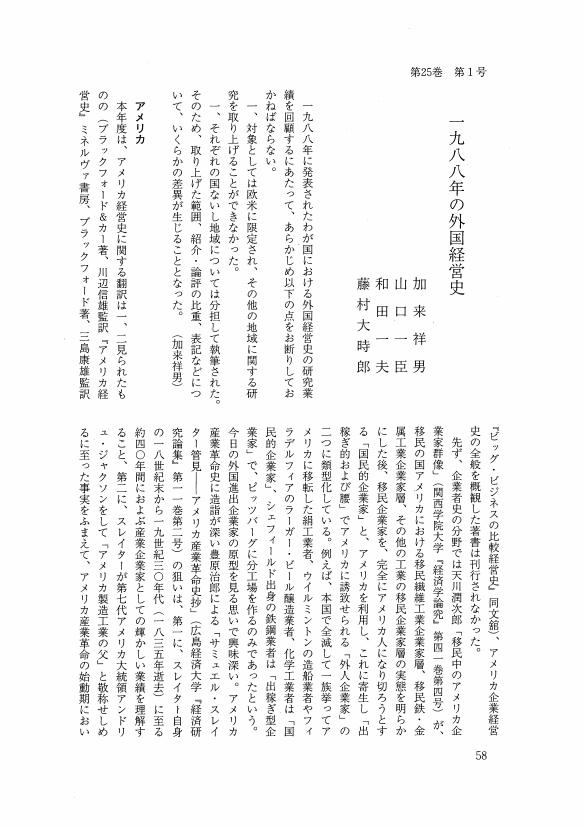2 0 0 0 OA 歴史文書の保存体制について ―経営文書の利用者の立場から―
- 著者
- 和田 一夫
- 出版者
- 一般社団法人 情報科学技術協会
- 雑誌
- 情報の科学と技術 (ISSN:09133801)
- 巻号頁・発行日
- vol.66, no.4, pp.143-147, 2016-04-01 (Released:2016-04-01)
過去の企業経営を知ろうと思えば,経営体が自ら生み出した文書(経営文書)の利用が不可欠となる。ただ日本で文書というと「手書き文書」のみを連想しがちである。しかし複製技術の進展だけでなく,企業規模の拡大もあって19世紀後半から「複製文書」が経営文書の中心になっている。こうしたことを踏まえて,かつ「複製文書」のデジタル化が進行していることを考えにいれながら文書の保存体制を整えていく必要がある。経営文書の保存について,日本の場合を考えて見ると,どこに何が保存されているかという利用者にとって重要な情報さえも整備されていないのが実情である。
1 0 0 0 OA 自動車産業における階層的企業間関係の形成 トヨタ自動車の事例
- 著者
- 和田 一夫
- 出版者
- 経営史学会
- 雑誌
- 経営史学 (ISSN:03869113)
- 巻号頁・発行日
- vol.26, no.2, pp.1-27, 1991-07-30 (Released:2009-11-06)
- 被引用文献数
- 1
The production of an automobile requires the assembly of over twenty thousand parts. Automobile manufacturers do not make such a large number of parts within their own firms but purchase, to varying extents, some parts from suppliers. Therefore, the purchasing policies and relationships with their suppliers have considerable effects on the quality and cost of their final products. Japanese automobile manufacturers organise suppliers in a hierarchical order: its first-tier suppliers form a Kyôryoku-kai (Cooperative Association of Suppliers). First-tier suppliers in turn organise second-tier supplier groups. The Japanese automobile manufacturers claim to maintain long-term relationships with their suppliers and tc, cooperate closely. This is often claimed to be the opposite to American automobile manufacturers' approaches to suppliers: they do not organise suppliers in a hierarchical order; and they often purchase parts on a spot-price basis, without developing long-term relationships and close cooperation with suppliers.This paper traces how the existing inter-firm relationships were evolved at Toyota, the largest automobile manufacturer in Japan, and also elucidates what “close cooperation” between an automobile manufacturer and its suppliers means for the suppliers. After presenting the historical evidence. this paper comes to the conclusion that: Toyota's managerial efforts shaped such peculiar inter-firm relations; Toyota developed and refined its own monitoring system over suppliers; confident with its monitoring system, Toyota transferred it to its first-tier suppliers, hoping they in turn could monitor the second-tier supplier group; Toyota and its suppliers cooperated closely. but Toyota always monitors suppliers' performances closely in terms of cost, delivery, quality and other factors; with such a monitoring system, Toyota facilitates competition among suppliers, who compete vigorously against one another to obtain more orders from Toyota and show their superiority over the others.
